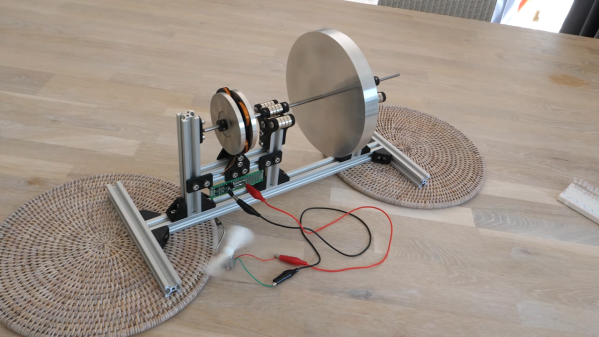You shouldn’t play with your food. Unless you’re designing some kind of portable cannon to fling it across the room. That’s precisely what [Backhaul Studios] did.
The first step of designing the condiment cannon was deciding what it should fire. Little low-profile tubs of jelly ended up being the ideal. They were stout enough to survive high-speed flight, while their low height was good for aerodynamics. The cannon itself is built from metal and 3D-printed parts. Multiple iterations eventually landed on a flywheel launcher design with big brushless motors and large 6-inch discs. It sounds positively awful in action and can fling jam (jelly) packets at immense speed. From there, it was simply necessary to design a magazine feed system to enable high-speed full-auto jelly delivery.
If you’ve ever hucked ketchup packets at a brick wall, you’ve understood the joy of splattering condiments everywhere. This cannon is just a way to do that faster and more hilariously. We’ve seen other fun builds along these lines before, too. Video after the break.

















